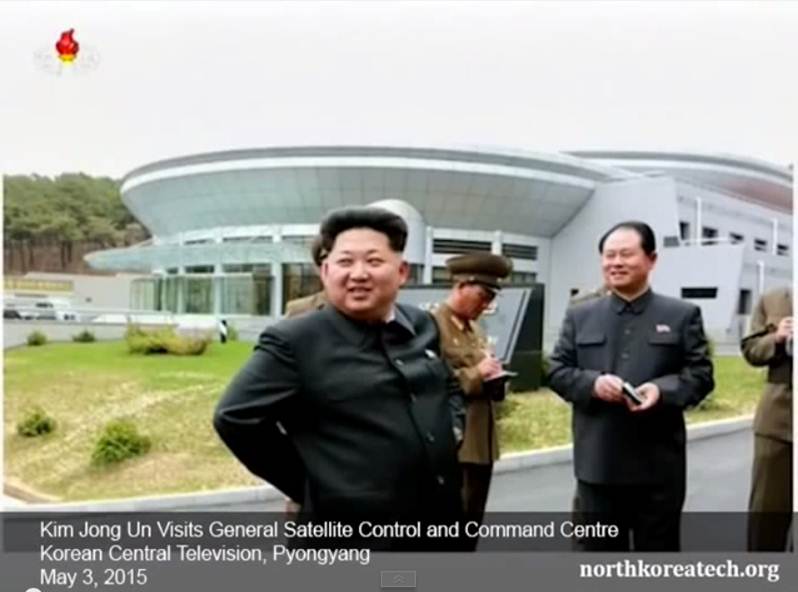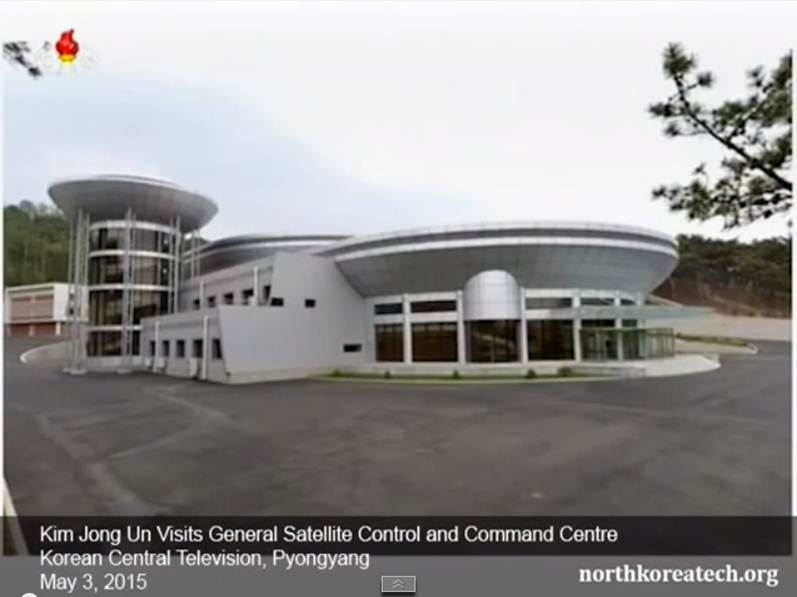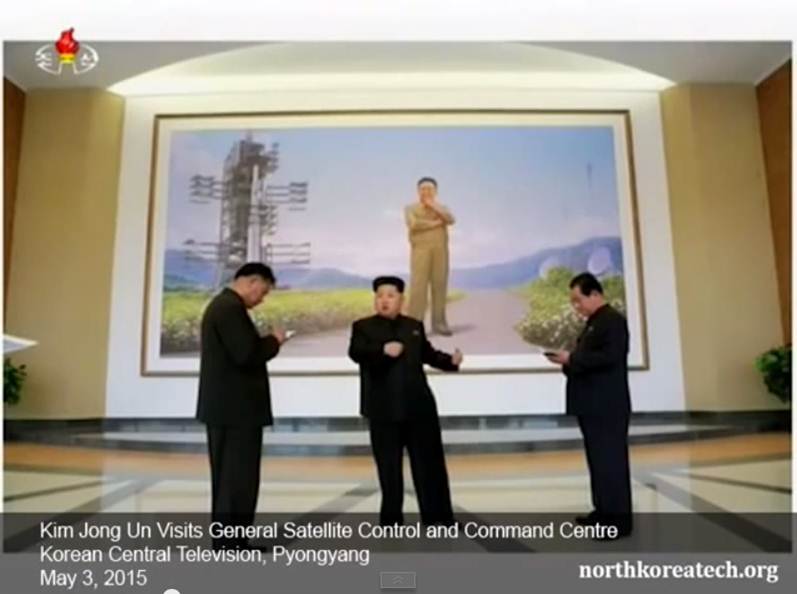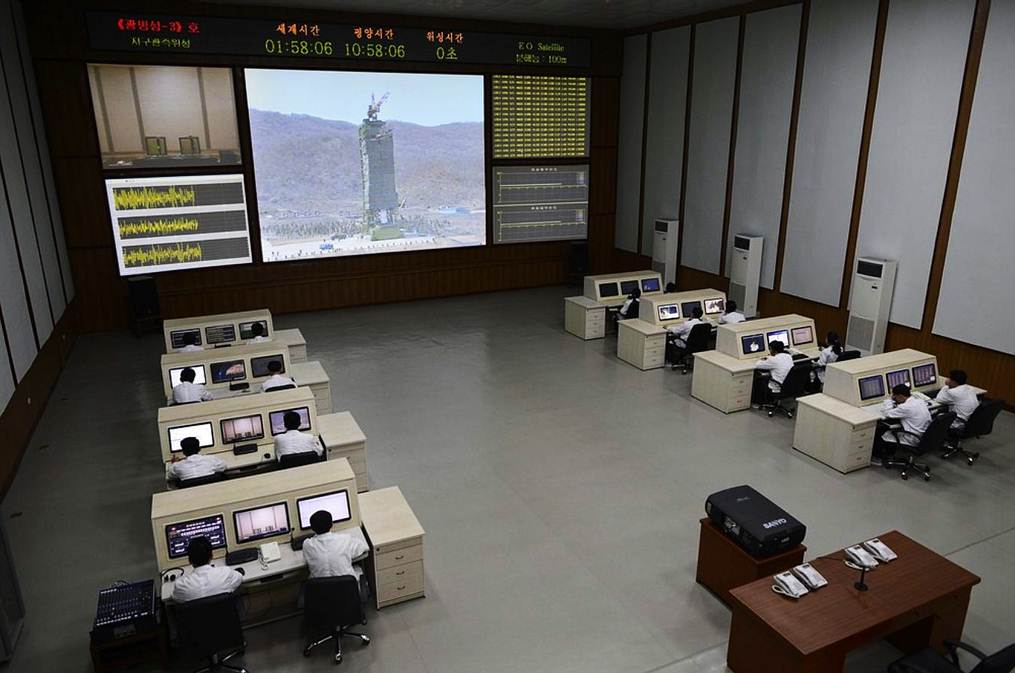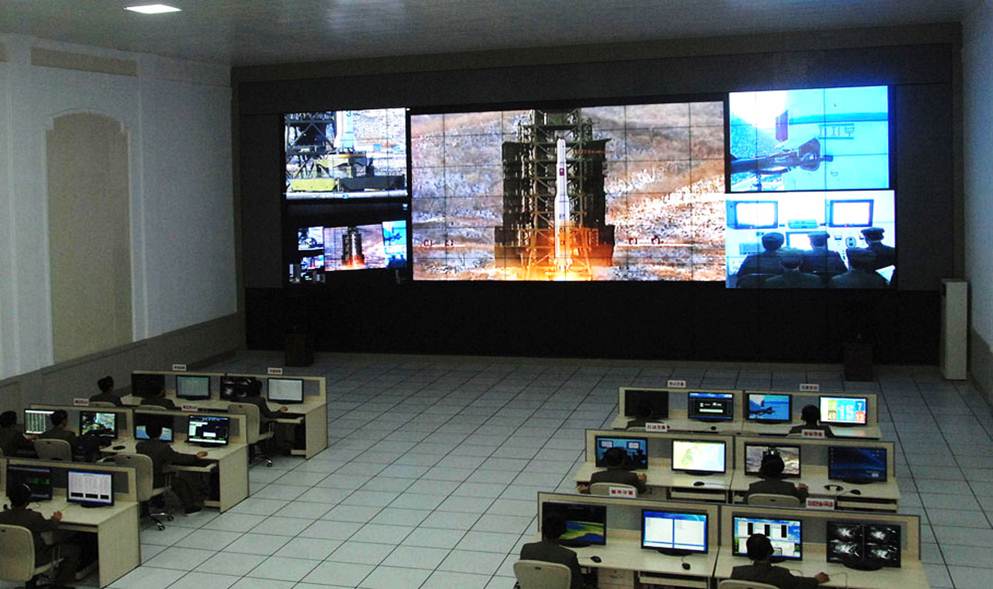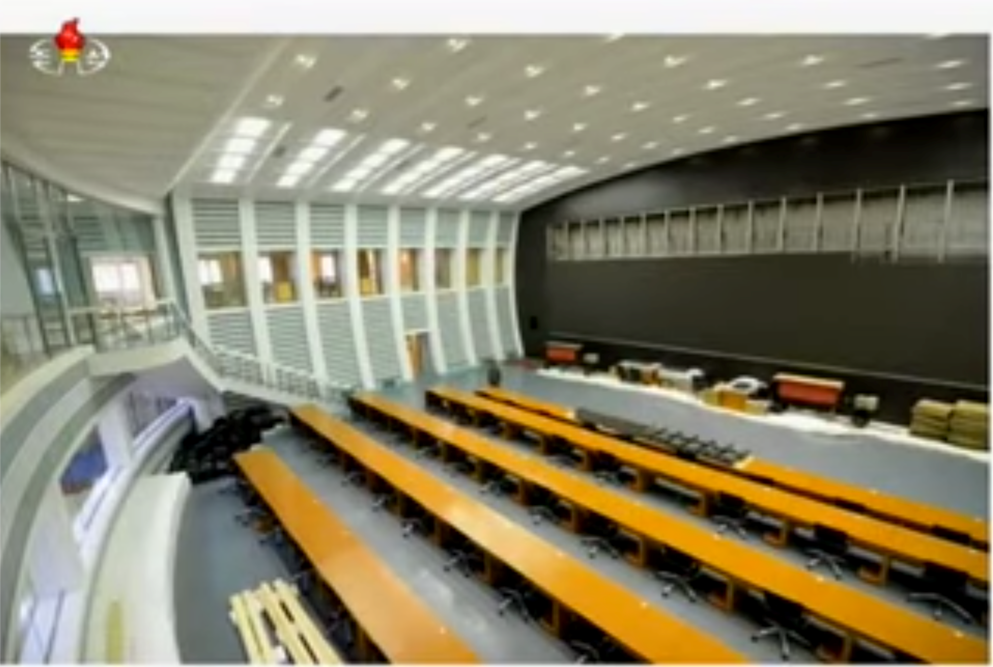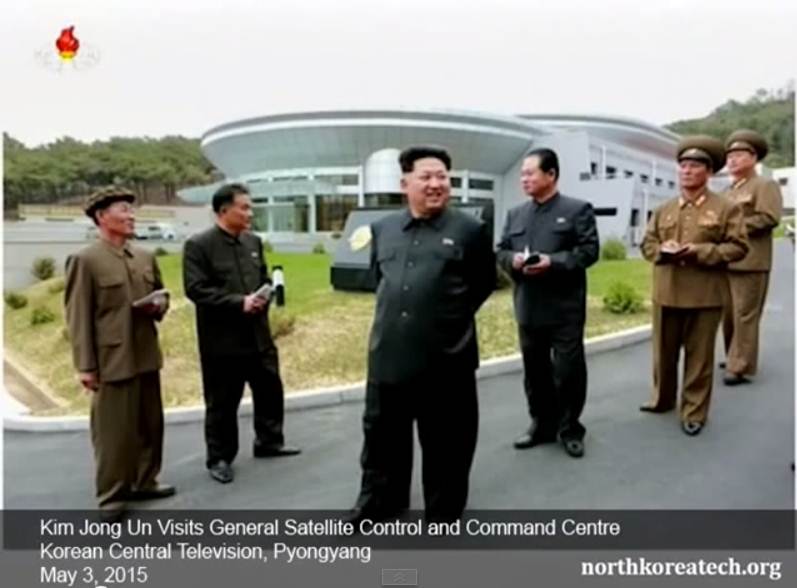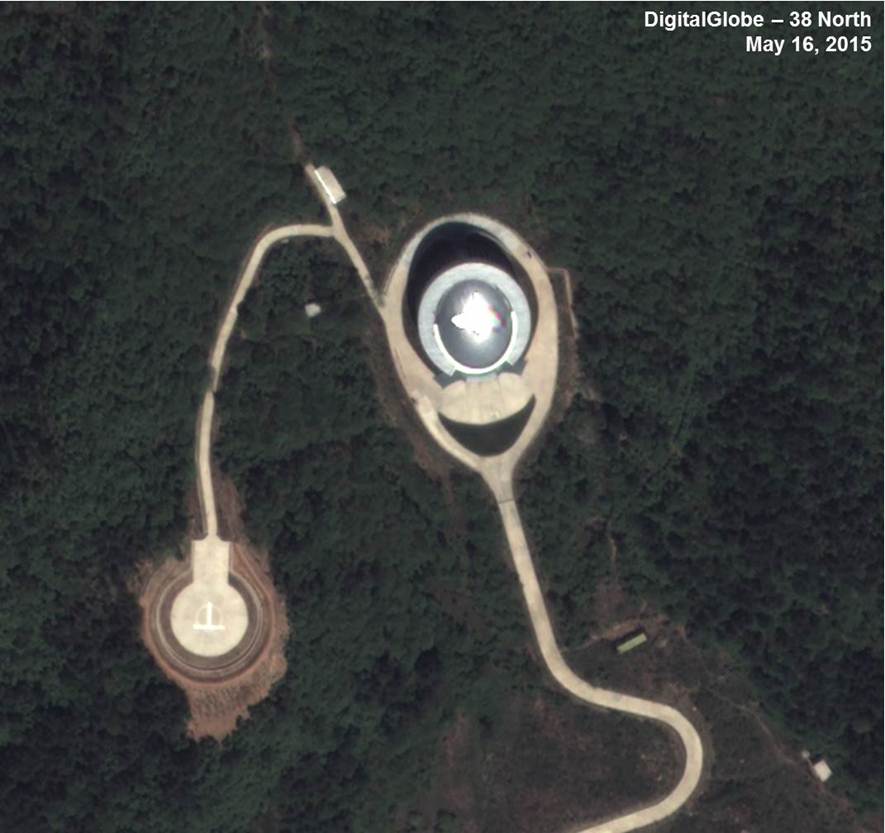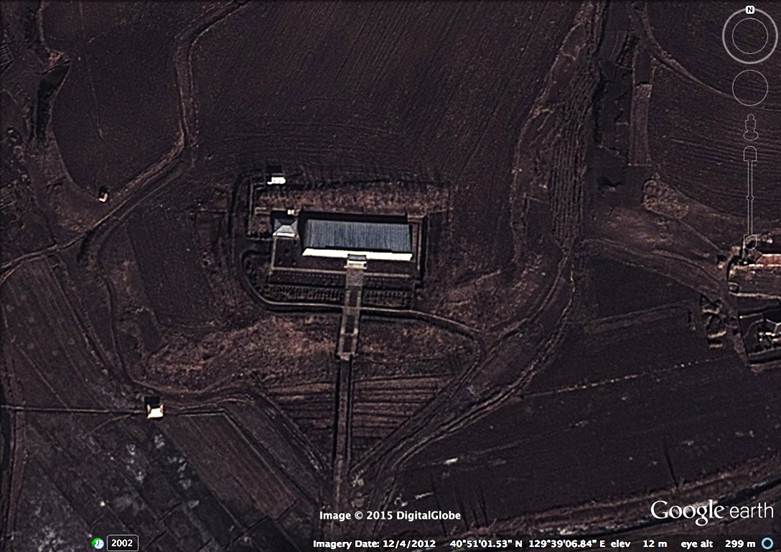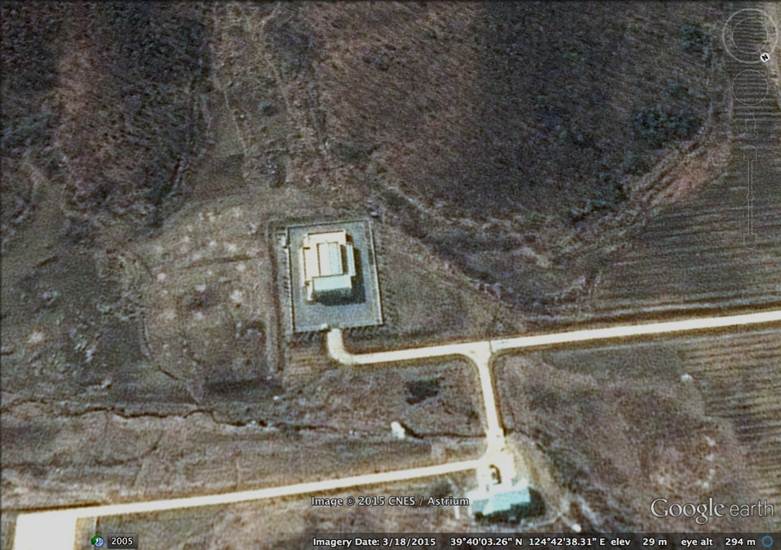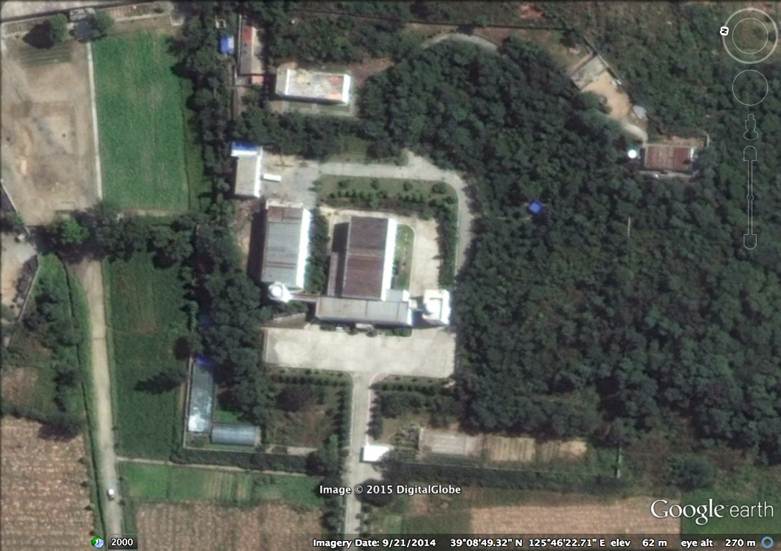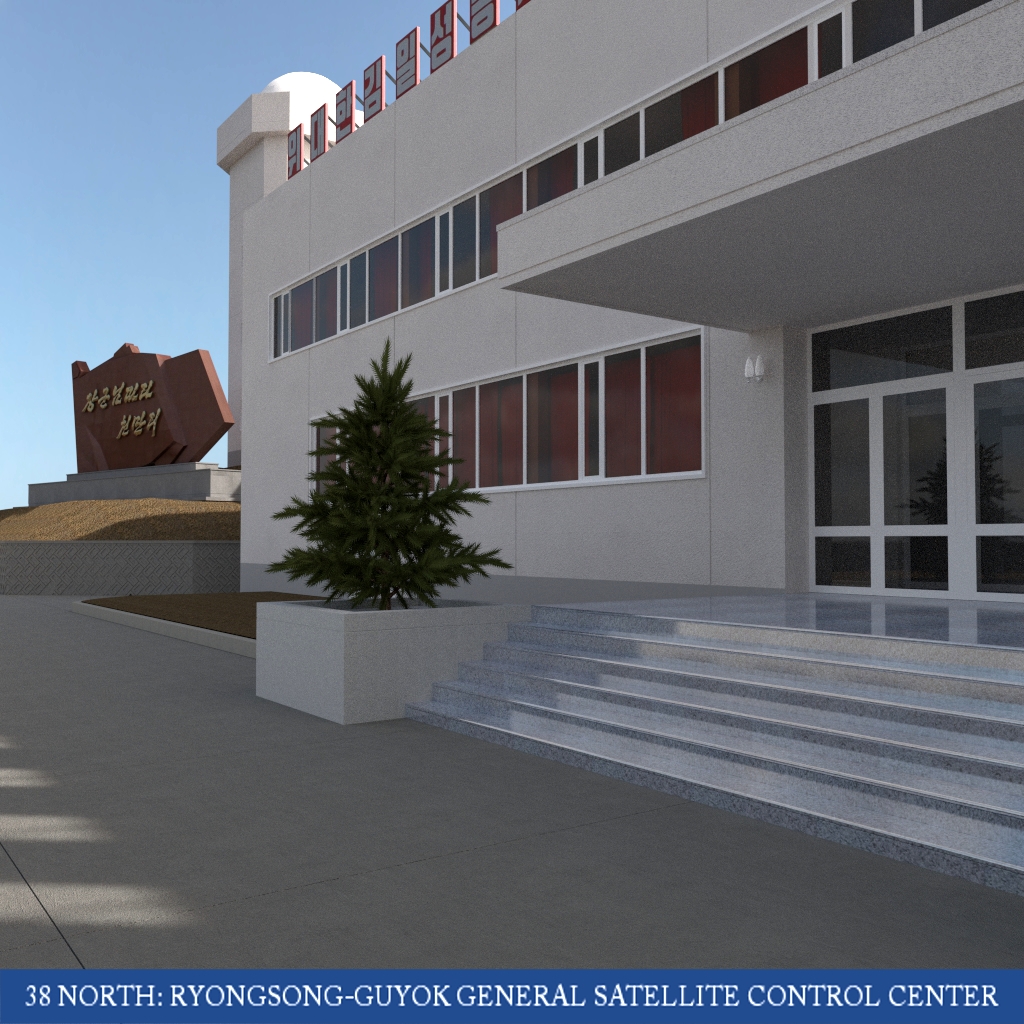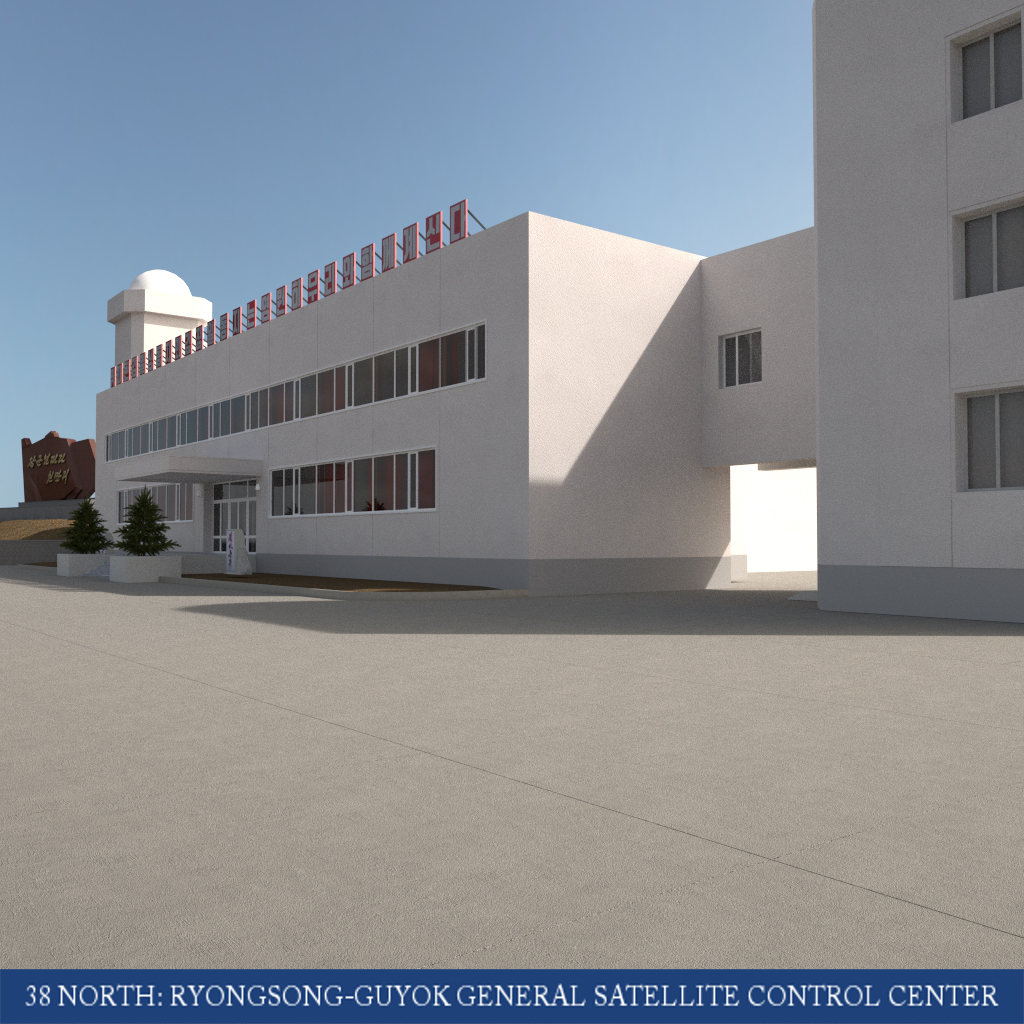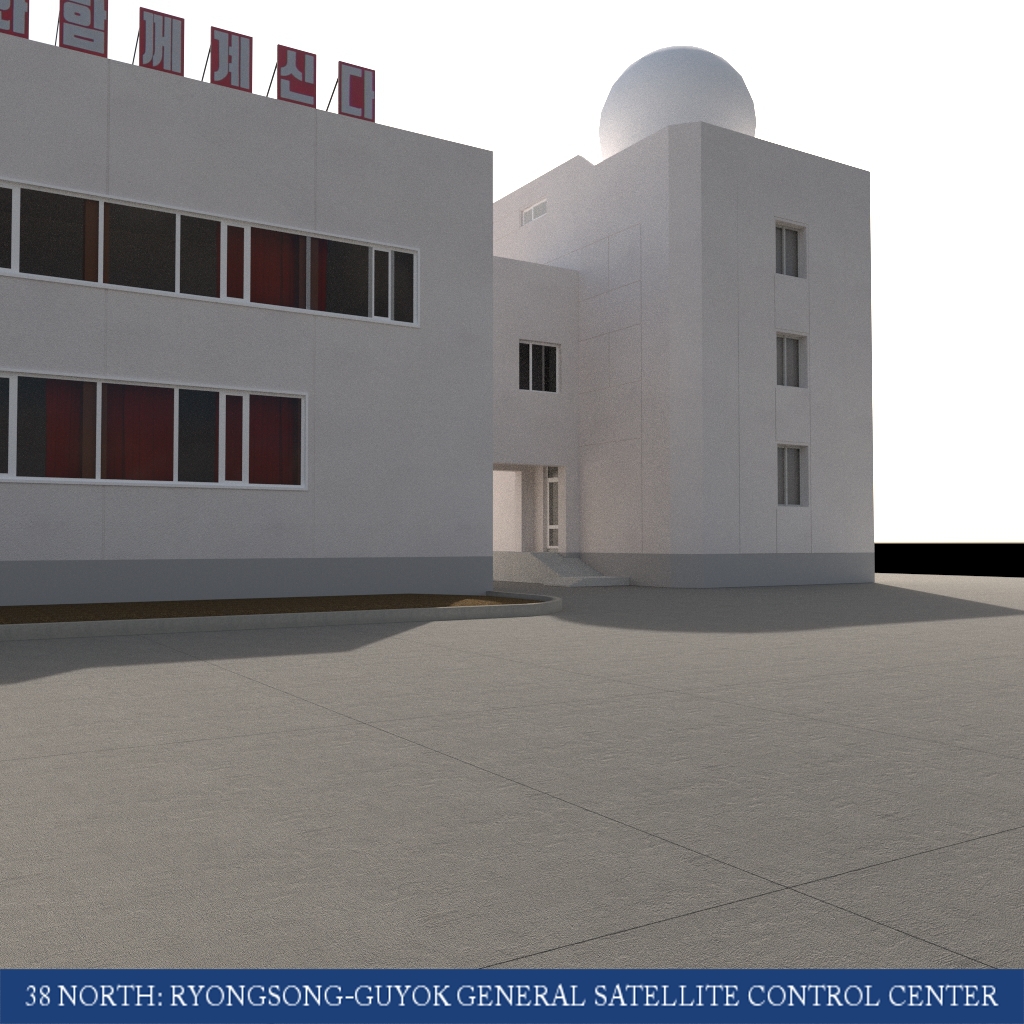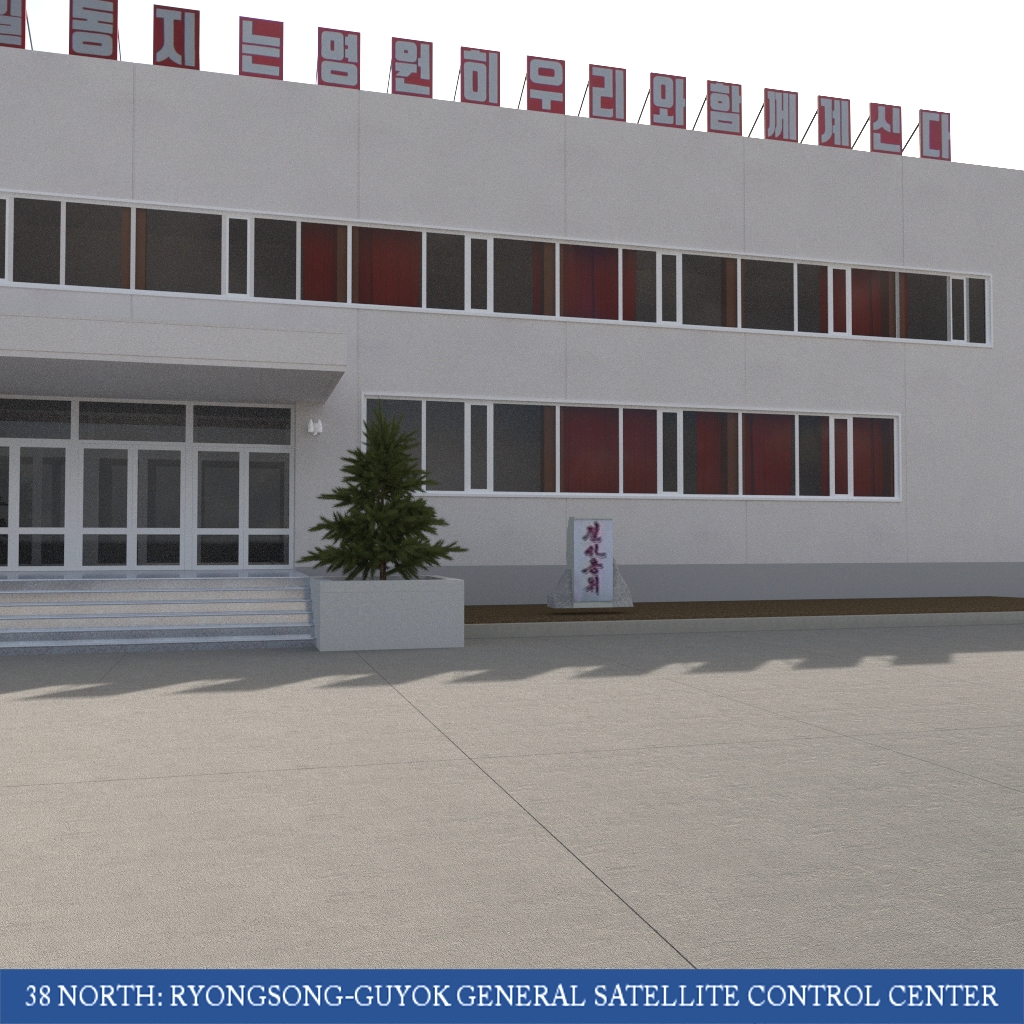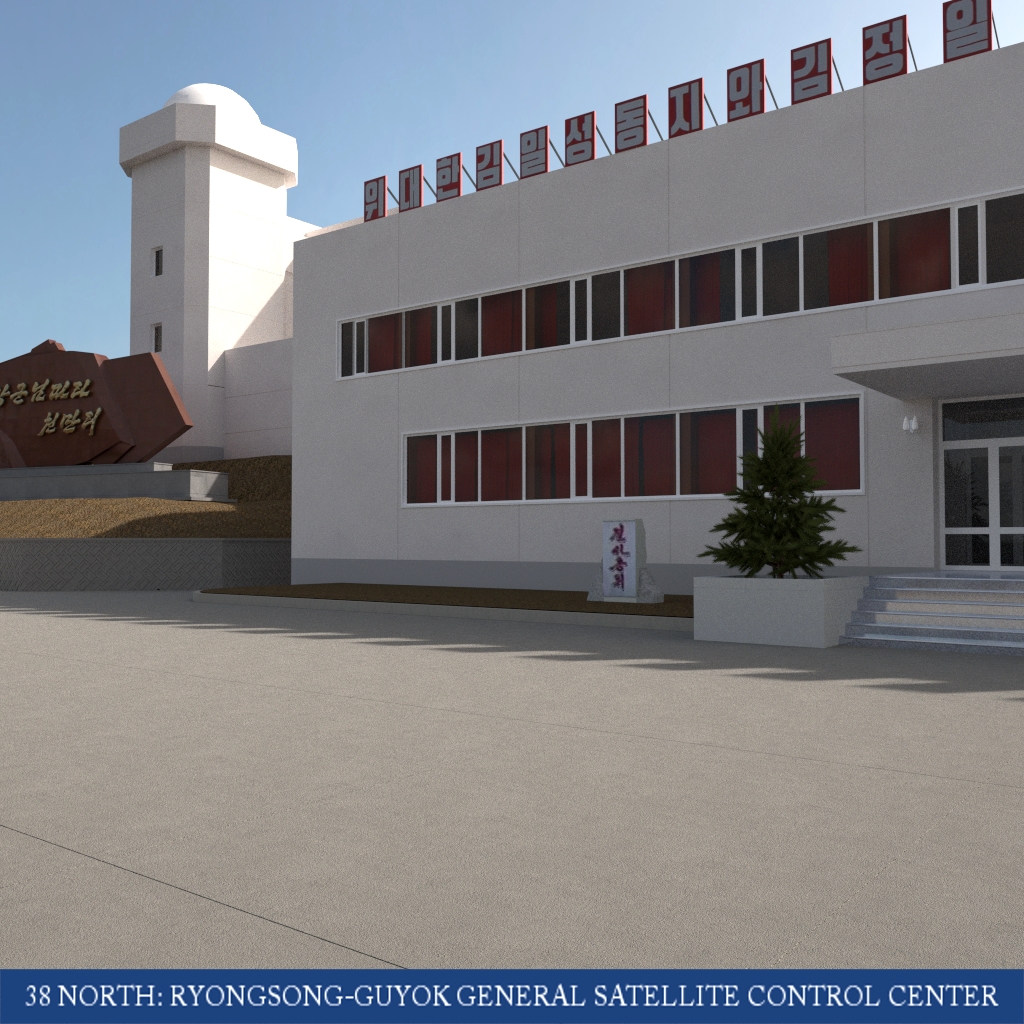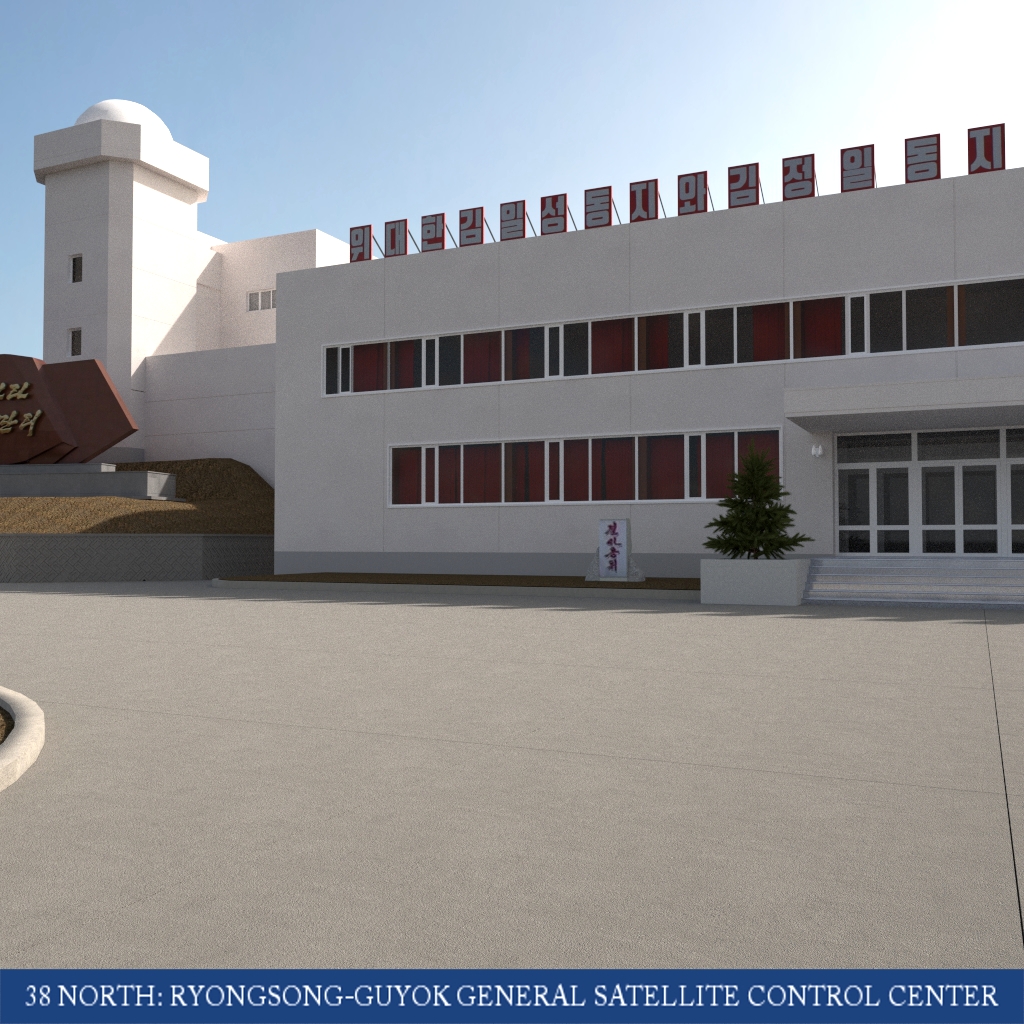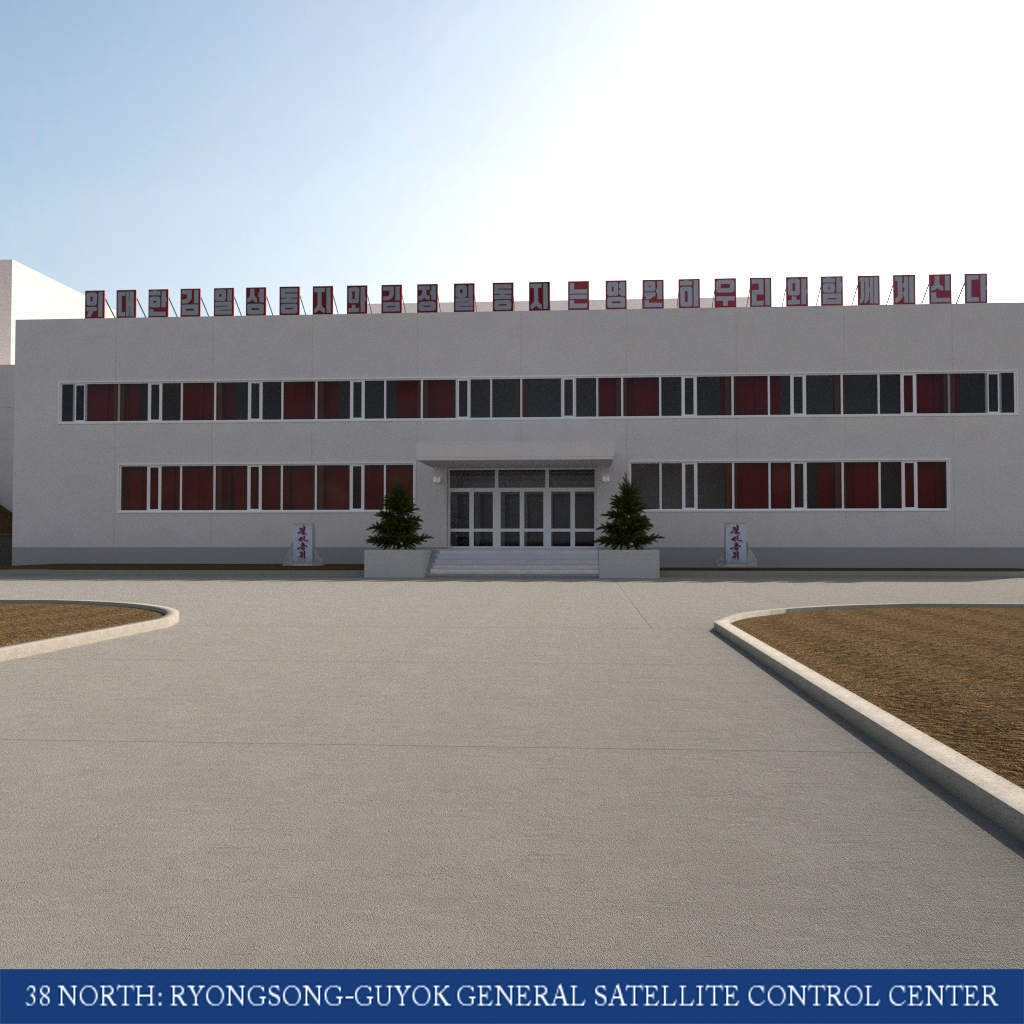Is North Korea Gearing Up for Another Space Launch?
On May 8, KCNA carried a typically vituperative essay by North Korea’s national space authority stating that “No matter who dares grumble and no matter how all hostile forces challenge the launch, satellites of Juche Korea will soar into the space one after another at the time and place designated and decided by the supreme leadership of the Korean revolution.”
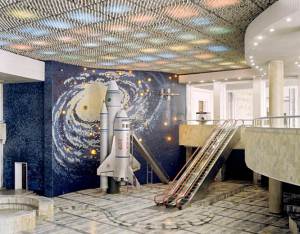
The new statement follows extensive coverage in recent months of North Korea’s space ambitions. On May 4, North Korean state media showed Kim Jong Un visiting “the newly-built General Satellite Control Centre of the National Aerospace Development Administration (NADA).” The new center looks like something out of the Jetson’s but with a monumental oil painting of Kim Jong Il contemplating a rocket dominating the entrance to remind you this is still North Korea.
The statement is the latest in a series of stories that highlight the role that space technology plays in North Korea’s economic development and national defense. The visit by Kim to see this “splendid edifice” is perhaps more significant. The new control center shows in a dramatic way what the statement says in words: North Korea’s space ambitions are real, however incongruous they may appear against the backdrop of the country’s poverty and political repression.
Construction of the new facility—located near the headquarters of North Korea’s National Defense Commission (NDC) in Pyongyang—began in 2014.[1] Images from the interior show that the building remains to be outfitted with computer terminals, wall displays and other equipment necessary for a functional satellite control center. But Kim Jong Un’s early trip to the site was not unusual. He often visits important state projects during their final stages of construction, leaving ribbon-cutting and other mundane opening ceremonies to lower level functionaries.

The New Satellite Control Center is expected to replace an older facility located in northwest Pyongyang. North Korea permitted foreign journalists and space experts to visit that control center in April 2012 for the (ultimately failed) rocket launch that was to celebrate the centenary of the late Kim Il Sung’s birth. Kim Jong Un observed the successful December 2012 Unha launch from the same location, although the interior was radically changed in the intervening months prompting outsiders, including myself, to wonder whether it was even the same room. Ultimately, measurements of the room and other information suggested that the satellite control center had been significantly modernized between April and December.[2]
The construction of the New Satellite Control Center follows the building of a new residence compound for space scientists in 2013. Kim Jong Un visited that residential complex, known as Unha Scientists’ Street, in September 2013—again, leaving the ribbon cutting to a functionary a few days later. Interestingly, the Unha Scientists Street is located only a few kilometers from the old satellite control center. The new center, however, is much further away—nearly 15 kilometers. Fortunately, traffic is not yet that much of a problem in Pyongyang.

Or perhaps the scientists have moved. In February, Kim Jong Un visited yet another residential complex referred to as the Mirae (Future) Scientists Street. North Korean media has been silent as about what sort of scientists will live at Mirae, but the new Scientists Street (38°59’43″N, 125°44’09″E) is only a few minutes drive from the new Satellite Control Center.
Pyongyang’s new satellite control center may lend itself particularly well to photographs, but it is only one piece of a broader effort by North Korea to build up its space capabilities. Its construction follows major improvements at the Sohae Satellite Launching Station over the past year. These developments, the subject of several 38 North analyses—including a recent piece by Tim Brown—include modifying the launch gantry to handle larger rockets and what appears to be a new launch control center that bears a stylistic resemblance to the new satellite control facility in Pyongyang.
These buildings differ in appearance from the traditional structure of the original satellite control center in Pyongyong, as well as the launch control centers at Sohae and Tongahe (see below).
The stylistic contrast between the old and new satellite control centers is dramatic. Nathan Hunt has completed an incredibly detailed three-dimensional render of the old Satellite Control Facility at Pyongyang.[3] That render, which helps understand the layout and function of the old building, also highlights the stylistic changes evident in the new round of North Korean construction.
North Korea’s original launch facility, near Tonghae (often referred to as Musudan-ri), is also receiving a new launch control center; but unlike new control centers at Sohae and Pyongyang, this building was constructed in a traditional style. It closely resembles the old Satellite Control Center in Pyongyang. One explanation is that Tonghae is used for military testing and only rarely appears in state propaganda.
While activities at Tonghae are closed to the outside world, Sohae is linked to a civil space program that requires modern looking buildings for photo opportunities and high-level visits. North Korean state media made specific reference to the architectural style of the new satellite control center, describing it as “a monumental edifice in the era of the Workers’ Party” that was “fresh and peculiar in style.”
“Buildings,” as architecture critic Nicolai Ouroussoff wrote in 1997, “convey the values of their builders.” The DPRK has made this explicit on a number of occasions, including in November when Kim Jong Un ordered designers to modify the interior of the new Terminal 2 at the Pyongyang International Airport because “the designers failed to bear in mind the party’s idea of architectural beauty that it is the life and soul and core in architecture to preserve the Juche character and national identity.” The appearance of a new, modern edifice at Sohae indicates that a future visit by Kim Jong Un may be in the cards—yet another opportunity to convey the DPRK’s commitment to the development of its space launch capabilities.
These developments follow a steady stream of North Korean statements about their space ambitions. The DPRK has long described its development of long-range missiles in terms of ambitions for civil space development. In 2011, the North published a White Paper with the title Space Is Common Wealth of Humankind that declared “No one can check the trend of the times toward the exploration of space for prosperity common to humankind and peaceful purposes.” That is certainly what Kim Jong Il told Madeline Albright in 2000.
North Korea acceded to the Outer Space Treaty and the UN Registration Convention in advance of its 2009 rocket launch. Subsequently, Pyongyang emphasized the peaceful use of outer space preceding the satellite launch in 2012 intended to mark the centenary of Kim Il Sung’s birth. And North Korean officials have been adamant in private Track II meetings that Pyongyang plans a significant number of space launches in the coming years.
One of the more interesting developments in the past few years was the DPRK announcement in March 2014 that it had created a National Aerospace Development Administration that serves as the “central guidance institution organizing all the space development projects,” apparently replacing the Korean Committee of Space Technology. While the logo drew widespread derision for its similarity to the NASA “meatball” (more) and Spanish-speakers noted that “nada” meant “nothing,” North Korea clearly intends the new entity to indicate the seriousness of its purpose. KCNA also carried two stories about a seminar on space technology held at Kim Il Sung University in December 2014, sponsored in part by NADA. The new satellite control center is explicitly linked to the establishment of NADA and its museum contains a display showcasing the administration.

What explains the North’s fixation with peaceful space exploration? As strange as it may sound, North Korea is serious for the same reasons that Moscow and Washington ran a space race during the Cold War and that China has spent the past few decades investing in human spaceflight. In addition to real economic benefits, space exploration is a source of pride for national governments that want to appear powerful and effective. Propaganda is about suggesting that the Kim family is doing a good job at running the country. Laugh all you want at North Korea, but what ostensibly civilian technology does North Korea do better than rockets? Where else are North Korean scientists competitive with their more prosperous neighbors south of the DMZ?
That brings us to the new, very large gantry at Sohae, as well as the significant construction that has been seen at the site. All these photo ops are probably only a prelude to the next step, which is a North Korean attempt to place a satellite into geostationary orbit—a significant milestone for any new space program given the altitude of the orbit and its importance for stationing communications satellites.[4] The DPRK has repeatedly emphasized this goal in Foreign Ministry statements, public rallies and speeches to the United Nations, but the large gantry suggests such a launch is more than just talk. The new control centers at Sohae and Pyongyang would provide spiffy backdrops for such a launch, “demonstrating the invincible might of Songun Korea.”
Jeffrey Lewis is Director of the East Asia Nonproliferation Program at the James Martin Center for Nonproliferation Studies (CNS), Middlebury Institute of International Studies at Monterey, and a frequent contributor to 38 North.
———————————————-
[1] The location was first identified by Joseph Dempsey, at the International Institute of Strategic Studies.
[2] See: James Oberg, North Korea’s Space Control Centers: Implications of Interior Rearrangements Note of Interest, May 1, 2013.
[3] Special thanks to Sungwon Baik and Voice of America who provided the source photos for the 3D renders.
[4] Alan Washburn provides the best explanation of geostationary orbit in his well-known paper, “Orbital Dynamics for the Compleat Idiot”: “A circular, geosynchronous orbit with inclination IN=0 will appear to hover above a point on the Equator. These orbits are geostationary. Specifying the fixed point on the Equator completely defines the location of a geostationary satellite for all time, so there can be only one geostationary orbit for every longitude. Geostationary orbits are popular for communication satellites because the corresponding ground antennas don’t have to move much. Fortunately, since the circumference of the geostationary orbit is 267,000 km, there is room for quite a few satellites. From its position at 5.6 Earth radii above the surface, a single geostationary satellite can see as far as 81 degrees north or south latitude—almost a complete hemisphere. Three or four carefully spaced satellites can cover most of the Earth, with the missing parts being polar or ocean regions where very few people live. This is all very convenient.” See: Alan Washburn, “Orbital Dynamics for the Compleat Idiot,” Naval War College Review 52:1 (Winter 1999), http://www.au.af.mil/au/awc/space/documents/orbital_dynamics.pdf.

